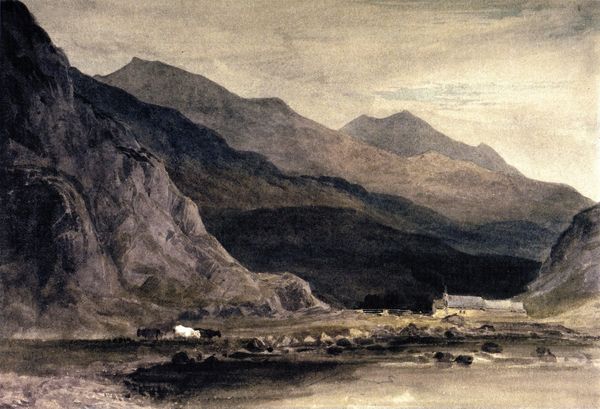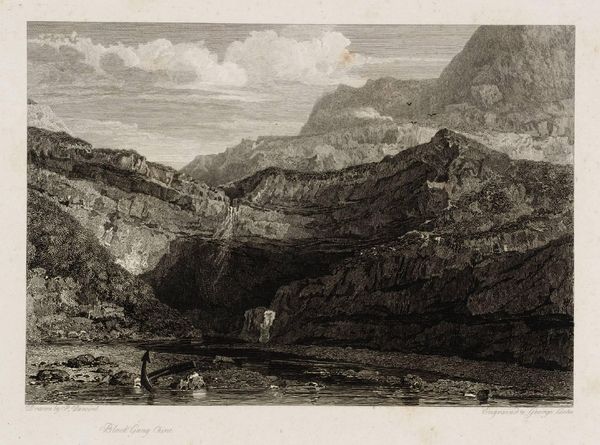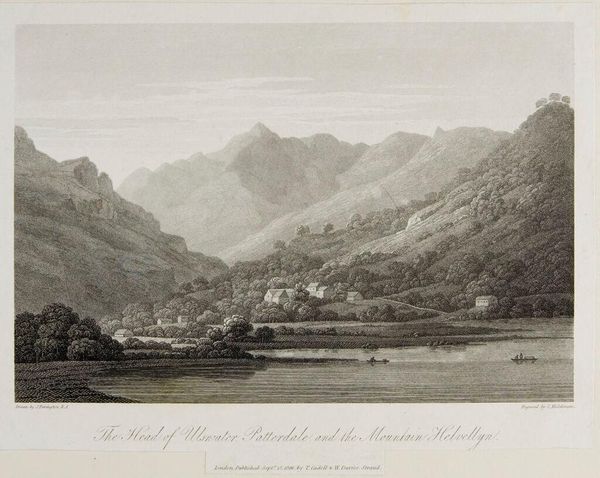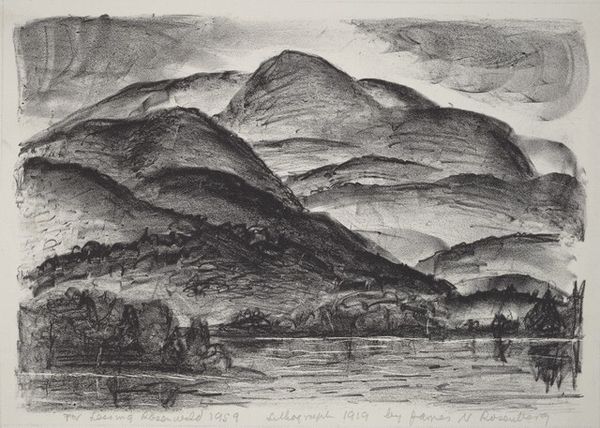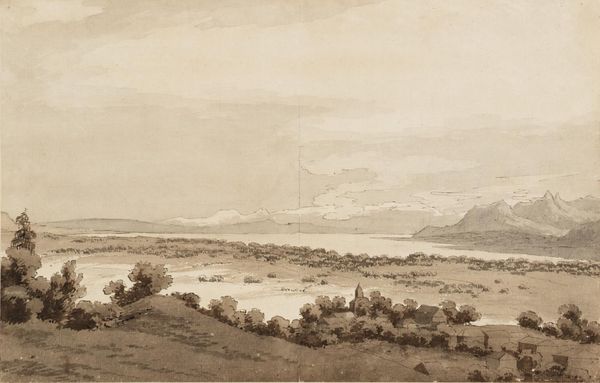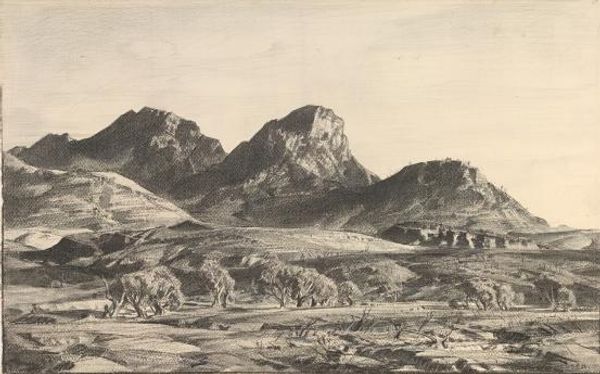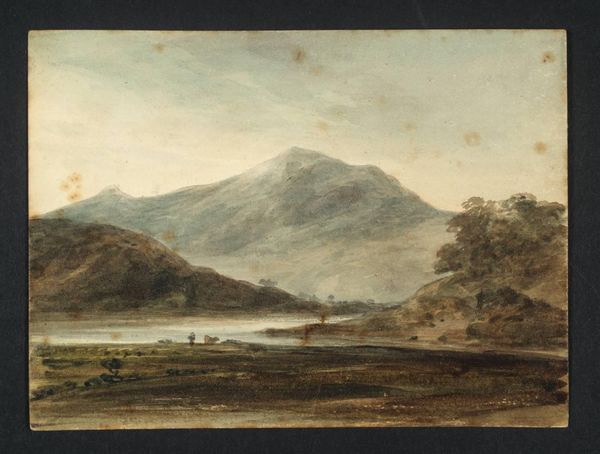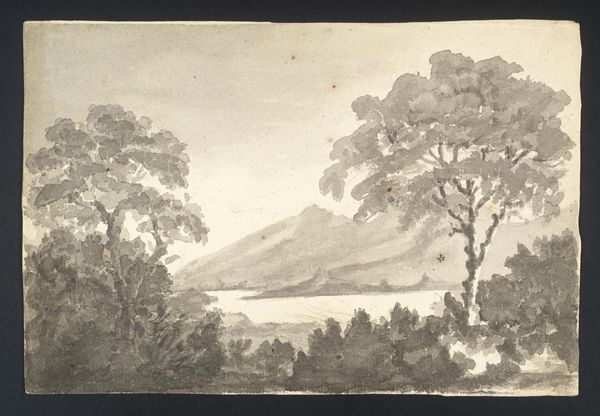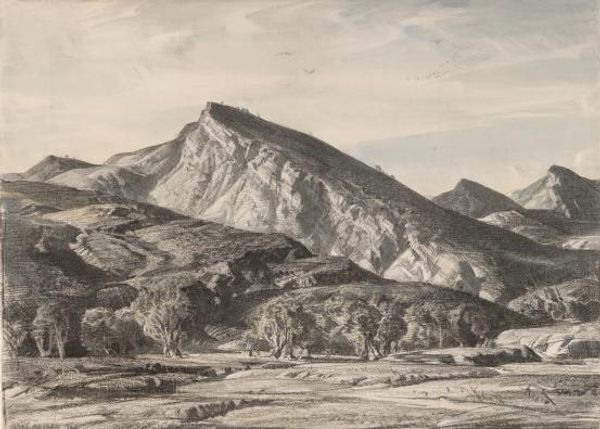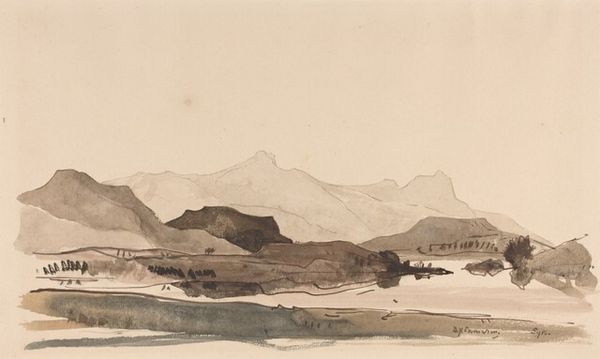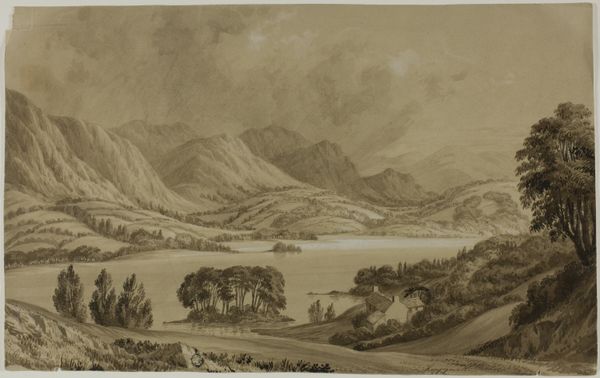
drawing, paper, pencil, graphite, charcoal
drawing
landscape
charcoal drawing
monochrome colours
paper
romanticism
pencil
graphite
charcoal
northern-renaissance
charcoal
natural form
Dimensions: 16.7 cm (height) x 22 cm (width) (Netto)
Editor: So, this is Thomas Fearnley's "Sketch from Parish in Norway," created in 1826 using primarily graphite, charcoal, and pencil on paper. It’s really evocative. The tonal range creates this immense depth, pulling you into the landscape. What do you see in this piece? Curator: I see a visual document reflecting early 19th-century Romantic ideals tied to nation-building. Landscape art wasn't just about pretty scenery. It played a crucial role in constructing a national identity. Norway, in 1826, was still under Swedish rule, right? So, think about what depicting its unique landscapes could signify politically. Editor: That’s interesting, I hadn't thought about it in those terms. How does the artwork achieve that nation-building effect? Curator: Consider how Fearnley highlights the sublime and untouched qualities of the Norwegian terrain. It reinforces a narrative of Norway's distinct character and ancient roots, separate from foreign rule. The seemingly objective portrayal masks a political agenda—almost like visual propaganda. Is this work displayed in the National Gallery, or another gallery of the era? Editor: It’s actually held in SMK – Statens Museum for Kunst, the National Gallery of Denmark. I am a little surprised it's in Denmark and not in Norway. Curator: The image existing within the Danish gallery adds to its story; The movement of art affects its socio-political effect. So it wasn't displayed in its nation of origin, so how would this image shape the views of its landscape within its own local context versus international spaces? And who has access to these artworks in either locations? These images construct complex global power relations and national aspirations. Editor: I see what you mean! It's fascinating to consider how the painting's meaning shifts depending on who is viewing it and where it's being displayed. Thanks, I have definitely learnt so much about the role of political influence and nationhood represented within artwork! Curator: Indeed! It demonstrates how art acts as a cultural and political tool. Food for thought, isn’t it?
Comments
No comments
Be the first to comment and join the conversation on the ultimate creative platform.

